War Breaks Out. How Will Students Get News?
A MiddleWeb Blog
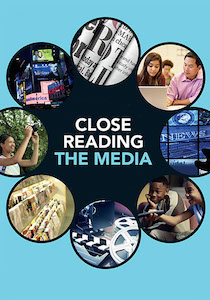 As I write this it appears that Russia is invading its neighbor Ukraine and the media will be filled with breaking reports and analysis for days and months to come.
As I write this it appears that Russia is invading its neighbor Ukraine and the media will be filled with breaking reports and analysis for days and months to come.
At times like this many adults turn to news sources to stay informed. Our students do too.
Let’s first consider WHERE students get their news these days, and then I’ll offer some valuable resources for following current events in this era of conspiracy theories, sensationalism and disinformation.
In 2020, 90% of US millennials got the latest news from popular social platforms. As for their other preferred news sources, 81% used news websites and apps, 78% listened to radio news, and 76% watched major-network news broadcasts. Interestingly, 56% said they still read newspapers, while 54% learned about at least some of latest news stories by listening to podcasts. (Source)
Where do your students turn for reliable and trustworthy information? Five years ago Snapchat, Facebook and Twitter appeared to be the three most popular venues teens went to for news. More recently (2021) the Pew Research Center found, in the words of USA Today, that “the striking short-form viral videos and images of Instagram, Snapchat, and TikTok continue to climb in popularity with Gen Z.” (Source)
It’s important to stress that these social media sites are not sources. At best they may point to authentic sources (e.g., the Associated Press highlighting its stories on Instagram). For the most part, social media platforms simply redistribute information and opinion created by entities and individuals – many of which may be unreliable at best.
Experts have already warned that “news” from social media is often problematic. Ease of access does not necessarily translate to accuracy. Students who depend on social media for their news often don’t know the source – many posts are simply reposts from somewhere else or opinion offered as “fact.” Anyone can post something as “news,” and students will need to stop and ask those “critical thinking” and “media literacy” questions which are valuable anytime and which all schools need to be teaching.
Additionally, images and video that are published from the conflict area or “war zone” may be “digitally altered” for propaganda purposes, so students need to question those as well. During this new conflict, reliable fact-checking groups will be important “go-to” sites for verification and clarification.
What Are ‘Trusted Sources’?
A 2017 University of Missouri study (The Trusting News Project) found that when it comes to most trusted news sources about the United States, four originate in the United Kingdom. They include The Economist, Reuters, the British Broadcasting Company (BBC), and The Guardian.
US-based sources mentioned as among the most trusted included National Public Radio (NPR), the Public Broadcasting Service (PBS), the Los Angeles Times, and The Wall Street Journal. (Source: AdWeek)
The Missouri study did not ask participants about breaking news. So where would you expect to get the latest news about the Russia/Ukraine conflict? From an American perspective, cable news networks like CNN, FOX, MSNBC, NEWSY will certainly have reporters and talk shows focusing on breaking news events.
Of special mention here is CNN-10 – the daily newscast produced specifically for a student audience. Educators – anyone – can access each new 10 minute newscast. CNN-10 archives are also displayed. For example, see this February 18 edition which pointed out the different “indications” about war offered by Russia and the U.S.
American-based ABC, CBS and NBC (and their streamed news services) will most likely have round-the-clock coverage of any major war developments. Newspapers like the New York Times and the Wall Street Journal still have sizable staffs of foreign reporters as does the Associated Press.
News Coverage from Abroad
The PBS Newshour regularly includes news segments from its partner International Television News (ITN), based in Great Britain. For other international perspectives, many of us have access to networks such as the British Broadcasting Corporation (BBC), RT (Russia), SKY (Britain), and NHK (Japan) via our cable/satellite systems. Al Jazeera (based in Doha) streams its news live as does Euronews.
The History of War Reporting
Check with your school librarian to determine if they have access to books on the history of war reporting, war documentary photography, or memoirs/biographies of notable war journalists. Obviously reporters and photographers put their lives on the line when they go into war-torn areas. A good question for students to consider is: what are the challenges for reporters in covering war and conflict?
Famed war journalist Martha Gellhorn and husband Ernest Hemingway reported across the globe during WWII, occasionally together. (Wikipedia)
During World War II, CBS journalist Edward R. Murrow, stationed in London, reported live from rooftops as German planes dropped bombs on the city. Your students could listen to one of his reports here. Defying the gender barriers of the time, Martha Gellhorn was one of the great war journalists of the mid-20th century – hiding away on a hospital ship during the invasion of Normandy (after being denied credentials) and reporting while she served as a stretcher bearer after D-Day.
With the advent of satellite communications, vivid same-day television news reporting provided dramatic coverage of the Vietnam War and eventually began to shift national opinion about its necessity. Documentary filmmakers Ken Burns and Lynn Novick’s Vietnam War PBS series offers tremendous insights about war and journalism during the rise of mass communications.
Questioning Sources of News Information
Students who will be following the news should also be given opportunities to question the reliability of their sources. (This becomes quite clear when we realize that many students have joined adults in forwarding “fake news” via favorite social media networks.) Students should consider who is conveying the information and should listen, watch or read a variety of news sources to get a better perspective.
More than likely, we will hear the word “propaganda” from news sources. Now would be a good time to review what that word means and how propaganda has been used in the recent past by Russia and its allies.
When war breaks out that involves U.S. forces, we can be sure that American reporters, working with the Defense Department, will attempt to be embedded with troops in order to be able to report from as close to the action as possible. This practice became popular during the 2003 invasion of Iraq.
Since American journalists are unlikely to be allowed in Russian territory, images will most likely emanate from other sources, including foreign news agencies with better access.
Surveillance or reconnaissance satellites often provide images of conflict areas. In the weeks preceding the conflict, the US government regularly released such images to show the world evidence of an impending Russian incursion.
A satellite image shows a military convoy moving south, in Golovchino, Russia February 23, 2022. Courtesy of Satellite Image 2022 Maxar Technologies/Handout via REUTERS (Source)
Good Time for Geo-Literacy
Could your students pick out Ukraine on an unlabeled map of that region of the world? Recently, 66% of Americans could not. How much do they know about the geopolitics of the region? Now might be a good time to pull up your favorite map and familiarize students with the area. I recently created a Ukraine Maps web page with news articles which include maps.
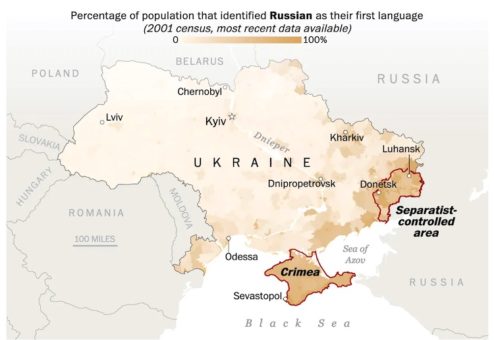 Ukraine and surrounding nations. Source: Washington Post.
Ukraine and surrounding nations. Source: Washington Post.
Here’s One Lesson Idea
Have students analyze and interpret a set of editorial cartoons about tensions between Russia and the United States (or other nations generally). After some review of the current political context (for example, U.S. sanctions vs. military action) and some general discussion about where/how editorial cartoons are used, form small discussion groups and give each group two cartoons, perhaps choosing two different political perspectives.
Have students answer questions like: What characters and objects are shown in the cartoon? What words are used? What political issue is being addressed? How are symbols used to represent people, places or things? What message do you think the cartoonist wants to convey? Then have them share the results of their analysis with the whole class.
Cagle Cartoons is a co-op website which shares and licenses editorial cartoons from all over the world, with many different “political leanings.” In addition, cartoonist Daryl Cagle produces daily cartoons of his own, which he often analyzes – a real plus for teachers and students. Using cartoons in class for educational purposes, including boosting Gen Z students’ appreciation of this unique form of journalism, is fair use.
Teen/Tween News Sources
New York Times Learning Network: Current Events
NYT-sourced news written for adolescent audience; lesson plans.
Best News Sources For Kids
Common Sense Media
6 Top News Sites for Kids & Teens
News For Kids
Teen Kids News
Other Resources
► How Reliable Are Search Engines?
The New York Times compared several search engines (including Google, Bing and DuckDuckGo) to see how each filtered “conspiracy theory” materials.
► What Do We Know about TikTok?
The New York Times reports regularly on the impact of what it describes as the most successful video app in the world.
► Experts Predict More Digital Innovation by 2030 Aimed at Enhancing Democracy
This 2020 study by Pew Research, which has relevance for K12 educators and curriculum, reports that “a majority of experts expect significant reforms aimed at correcting problems in democratic institutions and representation will take place in the next decade. Many (84%) say this will result in positive outcomes for the public good; others are less convinced.”
NOTE: This post is revised from a 2017 column when North Korea threatened the United States.
Frank W Baker is a 10+ year veteran of writing for MiddleWeb. His most recent book, Close Reading The Media, is designed to help educators engage students in media literacy. Baker operates the internationally recognized Media Literacy Clearinghouse website. He tweets @fbaker.

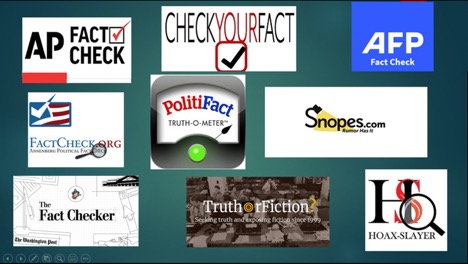
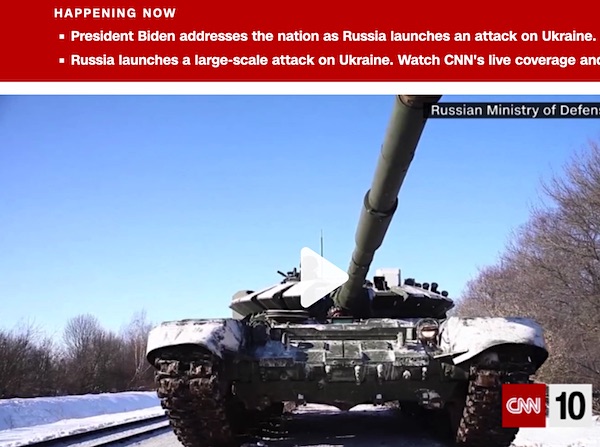
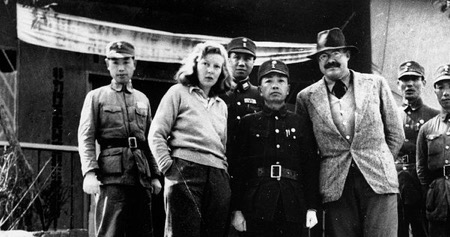
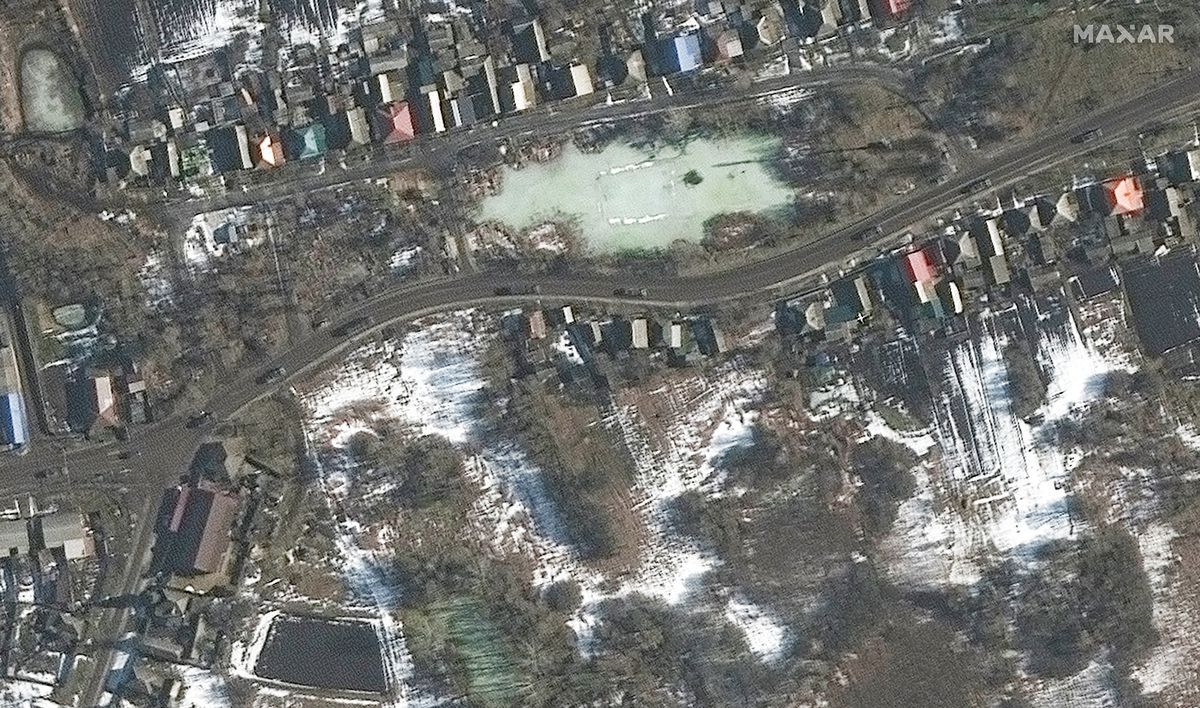
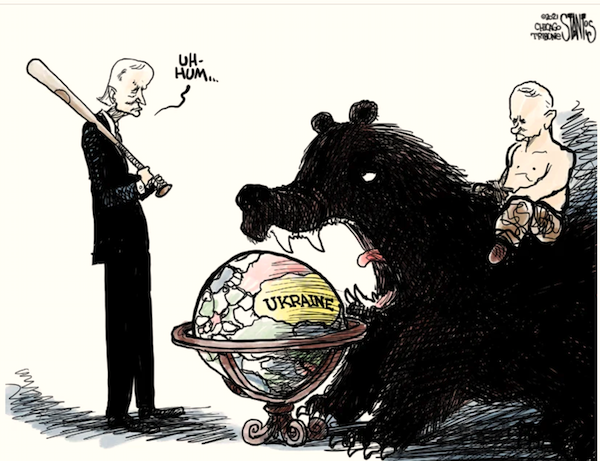
































Cable News Covers Ukraine With On-the-Ground Reporting and In-Studio Rhetoric https://www.nytimes.com/2022/02/24/business/media/cnn-fox-news-ukraine-russia.html
How to avoid falling for and spreading misinformation about Ukraine by Heather Kelly, WaPo, Feb. 24, 2022.
https://www.washingtonpost.com/technology/2022/02/24/tips-avoid-misinformation-ukraine/